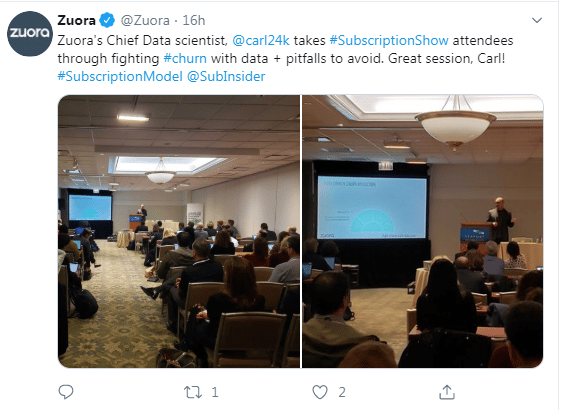
Three breakfast keynotes. A grand keynote and a lunch keynote. Six breakout periods with five track sessions for each breakout, plus networking and product demos. Event organizers made sure that attendees were plenty busy on the second day of the first-ever Subscription Show, held November 4 through 6 at Bostons World Trade Center conference center.
However, the event engaged not just feet but also minds. Many sessions featured in-depth analysis of the data and metrics that drive successful recurring revenue strategy. Here are some of the high points that hit home for the results-oriented attendees.
Lauren Kelley, the CEO and founder of OPEXEngine, ran a session on Valuing Your Recurring Revenue Business. Her comprehensive look at metrics included takeaways such as:
- Public markets truly do value software-as-a-service businesses, at 10-20 times revenue or even higher, while traditional software companies are valued at just 1-2 times revenue.
- Investors are looking at the Rule of 40 when judging a companys worth. The rule suggests that revenue growth rate added to profit margin should approach, or even exceed, 40. The rule provides a handy way to consider the relative worth of profit vs growth, allowing valid comparisons of companies with different business strategies.
- Looking at the importance of customer lifetime value (CLV) compared to customer acquisition cost (CAC) gives you the ratio of CLV/CAC, an extremely useful metric for considering the ultimate value of a customer to the company. Kelley suggests that 3x in 5 years is good [and a best in class figure might be 7-8x]. For every $1 you spend to acquire a customer, you earn $3 or more in profit.
Zuora chief data scientist Carl Gold took attendees through the metrics of churn and retention. If you want to reduce churn, start by having a great product, he said, but insights from your data can help you make a better product.

Using case study data that companies seldom release, he illustrated best practices and offered some compelling ways to look at the numbers:
- With the important caveat that your churn rate will vary depending on what you sell and how you sell it, Gold offered some guidance on typical churn rates. He said that the bottom 10% of companies he has studied have a churn rate of 5.7% monthly, with a median of 2.0%, and a churn rate for the top 10% of 0.6%. However, that does not mean the top 10% are better companies; it may just be that they deliver a high-price service to corporate customers who depend on the service to exist, and such businesses tend to have very low churn.
- Public companies reporting annual churn tend to report at a rate of less than 10% per year. But once again, these are successful firms with established products, so a low rate makes sense.
Churn is hard to predict, even if you are using data science, said Gold. Youre never going to know all the things you would like to know. However, with careful consideration of the metrics, churn reduction programs can yield up to 25% improvements in churn rates.
Chuck Price is the founder and CEO of Measurable SEO; he took a hard look at optimizing organic search results from the point of view of subscription firms. If you want to improve your appearance in Google, you have to continually improve your content, he said. Google looks for Expertise, Authoritativeness, and Trustworthiness.
- Citing BrightEdge research, he said that the subscription industry obtains 40% of its revenue from organic search. But there is a paradox there: sometimes increasing search engine traffic reduces conversion rates because search engines bring in people who have no interest in being subscribers.
- One way to entice Googling lookie-loos to become subscribers is through free trials. Price said that with a well-designed and rich content trial, conversion rates of up to 60% are possible.
- However, so far as Google is concerned, offering mobile-friendly and highly valuable content remains the best tactic. Googles latest BERT update, released just last month, affected 1 in 10 search queries and had a big impact on the New York Times.
Thats just a taste of the actionable information shared throughout the myriad sessions at Subscription Show 2019. As this successful inaugural show concludes for this year, organizers are already making plans for the 2020 iteration of the event. Meanwhile, the show concludes Wednesday with four discussion groups, three breakout sessions, and a closing grand keynote panel discussion.








